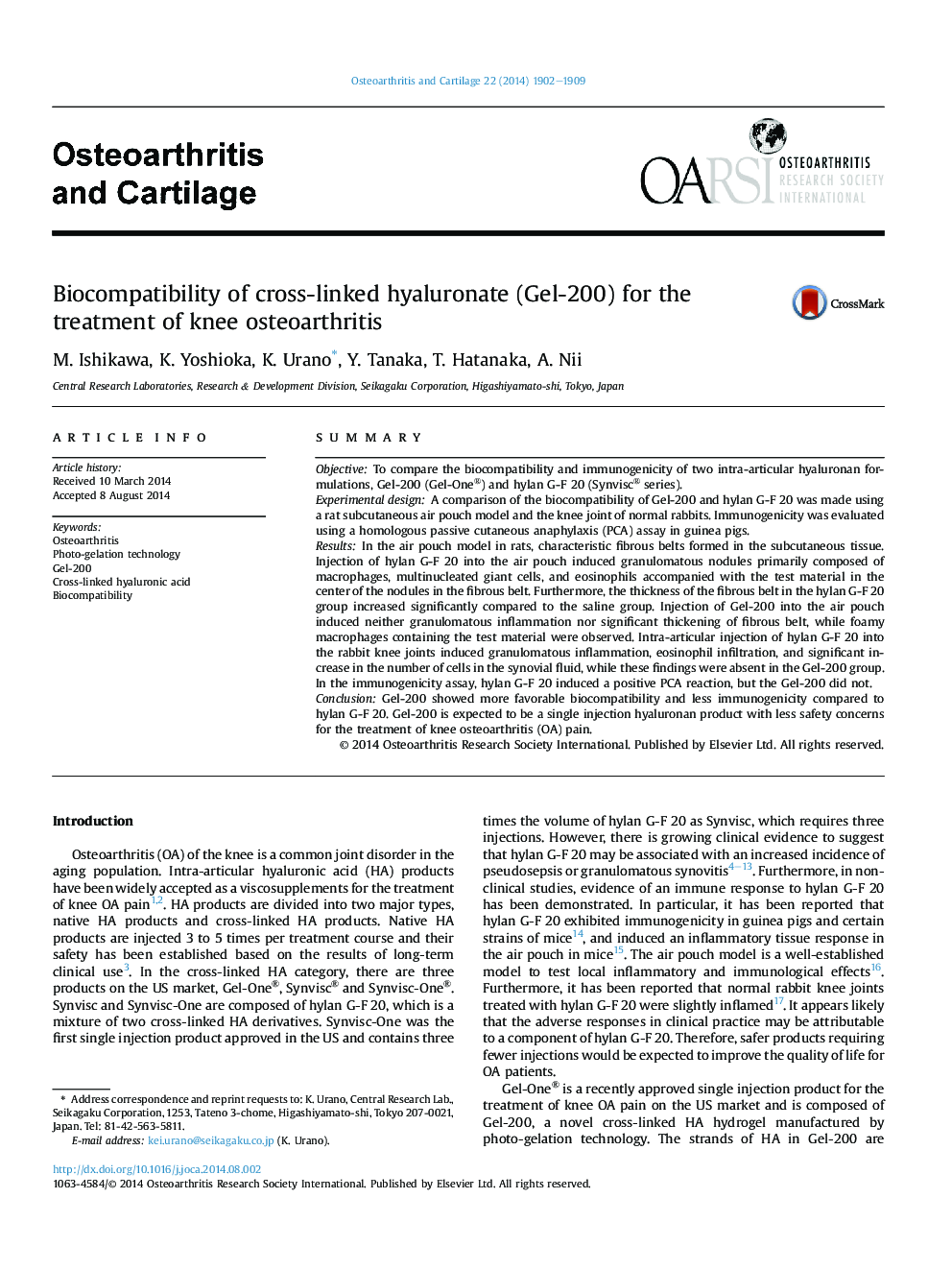| Article ID | Journal | Published Year | Pages | File Type |
|---|---|---|---|---|
| 3379431 | Osteoarthritis and Cartilage | 2014 | 8 Pages |
SummaryObjectiveTo compare the biocompatibility and immunogenicity of two intra-articular hyaluronan formulations, Gel-200 (Gel-One®) and hylan G-F 20 (Synvisc® series).Experimental designA comparison of the biocompatibility of Gel-200 and hylan G-F 20 was made using a rat subcutaneous air pouch model and the knee joint of normal rabbits. Immunogenicity was evaluated using a homologous passive cutaneous anaphylaxis (PCA) assay in guinea pigs.ResultsIn the air pouch model in rats, characteristic fibrous belts formed in the subcutaneous tissue. Injection of hylan G-F 20 into the air pouch induced granulomatous nodules primarily composed of macrophages, multinucleated giant cells, and eosinophils accompanied with the test material in the center of the nodules in the fibrous belt. Furthermore, the thickness of the fibrous belt in the hylan G-F 20 group increased significantly compared to the saline group. Injection of Gel-200 into the air pouch induced neither granulomatous inflammation nor significant thickening of fibrous belt, while foamy macrophages containing the test material were observed. Intra-articular injection of hylan G-F 20 into the rabbit knee joints induced granulomatous inflammation, eosinophil infiltration, and significant increase in the number of cells in the synovial fluid, while these findings were absent in the Gel-200 group. In the immunogenicity assay, hylan G-F 20 induced a positive PCA reaction, but the Gel-200 did not.ConclusionGel-200 showed more favorable biocompatibility and less immunogenicity compared to hylan G-F 20. Gel-200 is expected to be a single injection hyaluronan product with less safety concerns for the treatment of knee osteoarthritis (OA) pain.
